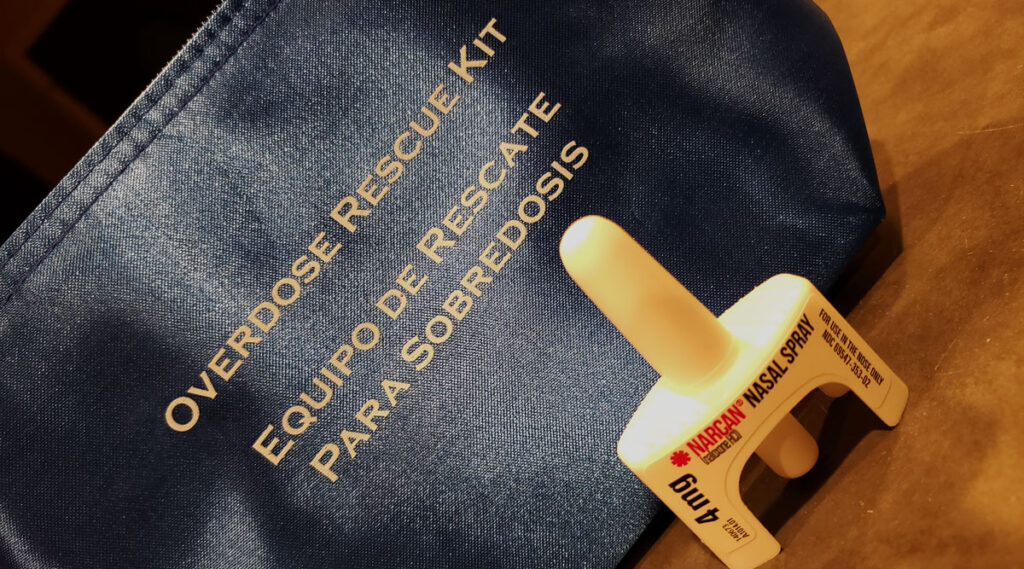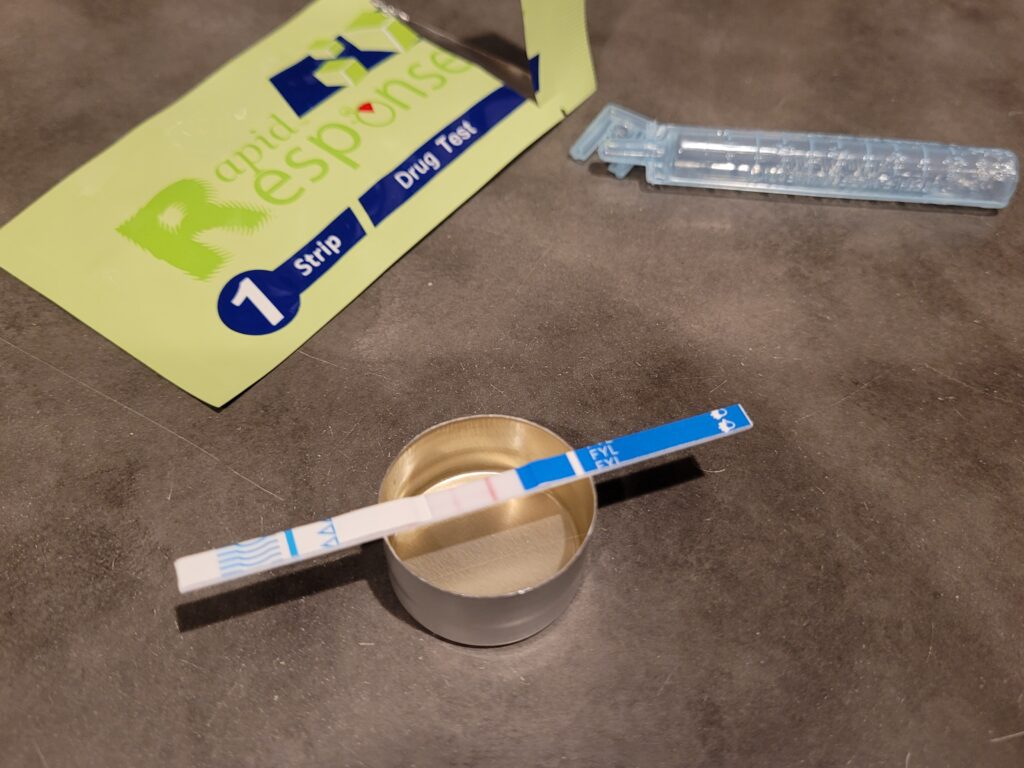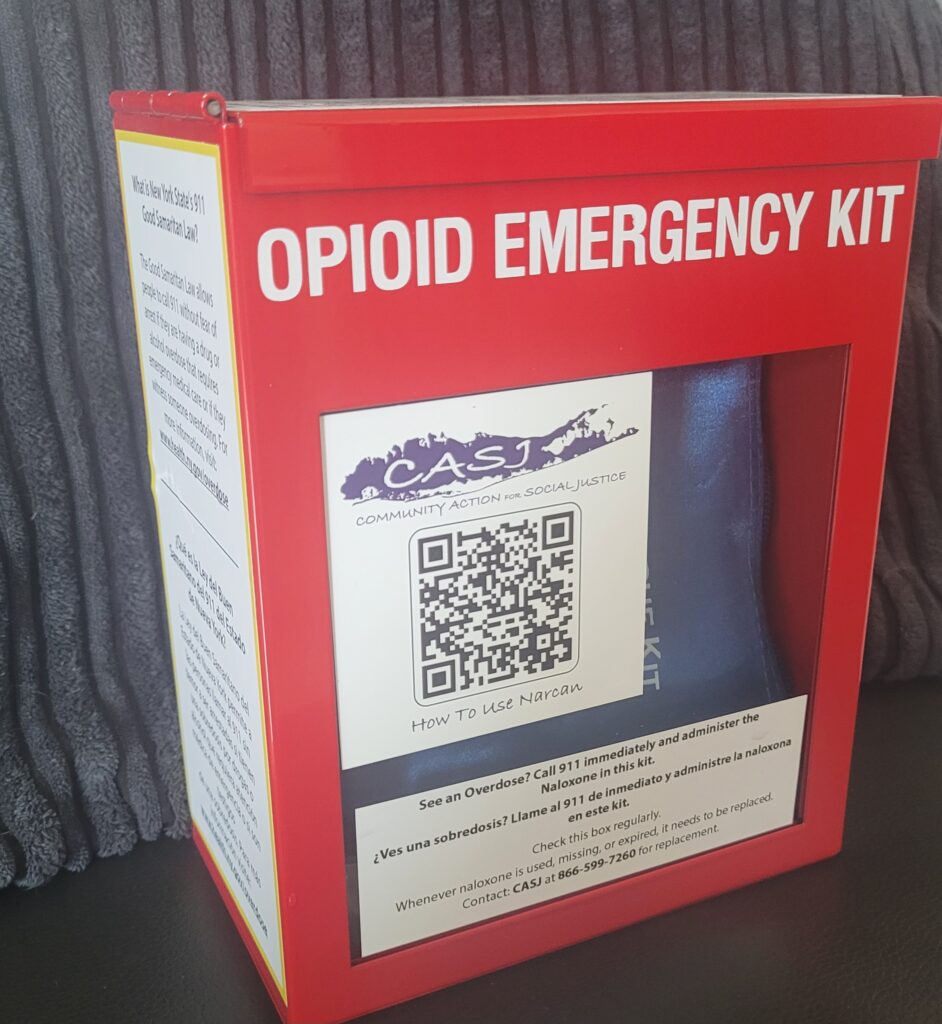OVERDOSE PREVENTION
What is an Opioid Overdose? Opiates are central nervous system (CNS) depressants, and they depress respiration. An overdose occurs when breathing slows too much to get enough oxygen to the brain or stops completely.
WHAT WE DO
A vital part of our work is our Overdose Prevention Program through which we provide free training and naloxone (Narcan) kits, not only at community events, but with individuals and families in the comfort and privacy of their own homes. Relapse is part of the process of recovery, but those who relapse after a period of abstinence are significantly more likely to overdose. If you have a loved one who is using heroin or other opiates, or who is recently in recovery, you should be prepared to use naloxone in the case of an emergency. If you are unable to attend a community training, you can schedule an individual/family training with CASJ by calling 866-599-7260 or emailing info@nysocialjustice.org. We are happy to arrange training on evenings and weekends.
What is an Opioid Overdose?
Opiates are central nervous system (CNS) depressants, and they depress respiration. An overdose occurs when breathing slows too much to get enough oxygen to the brain or stops completely.
Risk Factors for Opioid Overdose
- Decreased Tolerance: With consistent use of opioids, the body builds a tolerance, requiring more of the substance to achieve the same effects. When someone stops using, his or her tolerance decreases again. This is likely to happen while incarcerated or after going through a detox and/or rehab. Unfortunately, being abstinent increases a person’s chance for overdose if he/she
- Mixing Drugs: The majority of people who die from an overdose have been found to have multiple drugs in their Mixing opioids with alcohol or benzodiazepines (which are also CNS depressants) can increase the effect of opioids. Nearly all illicit drugs purchased today contain multiple substances, many of which are not known by the user.
- Health Issues: Respiratory issues (like pneumonia or asthma) may impair breathing even before the impact of opioids. In addition, liver problems (like hepatitis) may slow the rate of metabolism and make overdose more likely because the substance will remain in the body for a longer period of
- Using Alone: While using by yourself does not increase the chance that you will overdose, it does increase the chance that if an overdose occurs it will be fatal because there will be no one to help Do not lock yourself in a room where no one can get to you. If possible, make sure someone knows you are using and have Naloxone available.
What Does an Opiate Overdose Look Like?
- Non-responsive
- Very slow, shallow or gurgled breathing, or not breathing at all
- Bluish lips (due to lack of oxygen)

Responding to an Opiate Overdose
- Naloxone (Narcan): Administer the first dose immediately. (With intranasal administration: Tilt the person’s head back and spray the entire dose into one nostril. Do not push the button until the device is in the nose).
- Call 911: Make sure to report that the person is not breathing.
- Rescue Breathing (or CPR, if you are trained to administer chest compressions): Lay the person on his/her back, and check to make sure there is nothing caught in the throat. Use the face shield supplied in your Opioid Overdose Prevention kit. Tip the head back, pinch the nose closed, and breathe deeply into the person’s mouth once every five seconds.
- 2nd Dose of Naloxone: If there is no response after 2 min, administer the 2nd dose of naloxone.
- Rescue Breathing: Continue rescue breathing (or CPR) until help arrives
(also called Narcan): If you have been trained and certified to use Naloxone, administer the first dose if the person does not respond to rescue breathing after 2 minutes.
If you want to schedule a naloxone (Narcan) training for yourself, your family, or your community, contact us:
1-866-599-7260 / info@nysocialjustice.org



